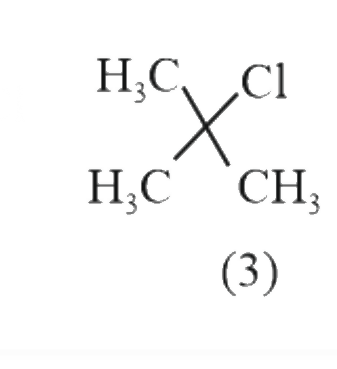BiCl3 can be reduced to metallic bismuth by:
H2S
SO2
FeSO4
Na2[Sn(OH)4]
The correct Answer is:D
To reduce bismuth chloride (BiCl₃) to metallic bismuth (Bi), we can follow these steps:
1. Identify the Reactants: We start with bismuth chloride (BiCl₃) as our reactant. We need a reducing agent to convert it to metallic bismuth.
2. Choose the Reducing Agent: Among the given options, we need to determine which one can effectively reduce BiCl₃ to Bi. The options provided are:
- H₂S (hydrogen sulfide)
- SO₂ (sulfur dioxide)
- Ferrous sulfate (FeSO₄)
- Na₂Sn(OH)₄ (sodium stannate)
3. Evaluate the Reducing Agents:
- H₂S is a mild reducing agent and may not be strong enough to reduce BiCl₃ to Bi.
- SO₂ is also a weak reducing agent and typically oxidizes rather than reduces.
- Ferrous sulfate (FeSO₄) can act as a reducing agent, but it is not the most effective for this reaction.
- Na₂Sn(OH)₄ is a strong reducing agent and is commonly used for the reduction of metal halides to their respective metals.
4. Write the Reaction: The reaction of BiCl₃ with Na₂Sn(OH)₄ in a basic medium (using sodium hydroxide, NaOH) can be represented as follows:
BiCl3+Na2Sn(OH)4→Bi+Na2SnO6+NaCl
5. Balance the Reaction: To balance the reaction, we ensure that the number of atoms for each element is equal on both sides. The balanced equation can be represented as:
2BiCl3+3Na2Sn(OH)4→2Bi+3Na2SnO6+6NaCl
6. Conclusion: From the analysis, we conclude that bismuth chloride (BiCl₃) can be effectively reduced to metallic bismuth (Bi) using sodium stannate (Na₂Sn(OH)₄). Therefore, the correct answer is option 4: Na₂Sn(OH)₄.
- H₂S (hydrogen sulfide)
- SO₂ (sulfur dioxide)
- Ferrous sulfate (FeSO₄)
- Na₂Sn(OH)₄ (sodium stannate)
- H₂S is a mild reducing agent and may not be strong enough to reduce BiCl₃ to Bi.
- SO₂ is also a weak reducing agent and typically oxidizes rather than reduces.
- Ferrous sulfate (FeSO₄) can act as a reducing agent, but it is not the most effective for this reaction.
- Na₂Sn(OH)₄ is a strong reducing agent and is commonly used for the reduction of metal halides to their respective metals.
BiCl3+Na2Sn(OH)4→Bi+Na2SnO6+NaCl
2BiCl3+3Na2Sn(OH)4→2Bi+3Na2SnO6+6NaCl
Topper's Solved these Questions
- QUALITATIVE INORGANIC ANALYSISBOOK - VK JAISWAL ENGLISHCHAPTER - QUALITATIVE INORGANIC ANALYSISEXERCISE - LEVEL 3
62 Videos
- QUALITATIVE INORGANIC ANALYSISBOOK - VK JAISWAL ENGLISHCHAPTER - QUALITATIVE INORGANIC ANALYSISEXERCISE - ONE OR MORE ANSWER IS/ARE CORRECT
43 Videos
- QUALITATIVE INORGANIC ANALYSISBOOK - VK JAISWAL ENGLISHCHAPTER - QUALITATIVE INORGANIC ANALYSISEXERCISE - SUBJECTIVE PROBLEMS
4 Videos
- PERIODIC PROPERTIESBOOK - VK JAISWAL ENGLISHCHAPTER - PERIODIC PROPERTIESEXERCISE - MATCH THE COLUMN
11 Videos
- s-BLOCK ELEMENTSBOOK - VK JAISWAL ENGLISHCHAPTER - s-BLOCK ELEMENTSEXERCISE - SUBJECTIVE PROBLEMS
2 Videos
Similar Questions
SO2 can reduce :
View SolutionGive reasons for the following :
(a) Alumina is dissolved in cryolite for electrolysis instead of being electrolyzed directly.
(b) Zinc oxide can be reduced to metal by heating with carbon but Cr2O3 cannot be reduced by heating with carbon.
View SolutionPh3SnH can be used to reduce


View Solution
can be reduced to
by the reagents.
View SolutionThe oxide of a metal (R ) can be reduced by the metal (P) and metal (R ) can reduce the oxide of metal (Q). Then the decreasing order of the reactivity of metal (P), (Q) and (R ) with oxygen is :
View SolutionThe Ellingham diagram for a number of metallic sulphides is shown below.

Which of the following sulphides can not be reduced to metal by H2 at about 1000∘C ?
View SolutionThe metal oxide which cannot be reduced to metal by carbon is
View SolutionThe metal oxide which cannot be reduced to metal by carbon is
View SolutionName the following :
A black metallic oxide reduced to metal on heating with coke.
View SolutionThe process in which metal oxide is reduced to metal by Al is called
View Solution
